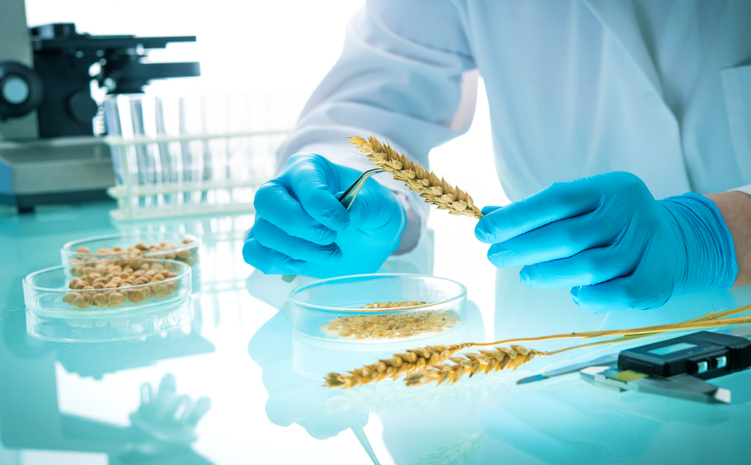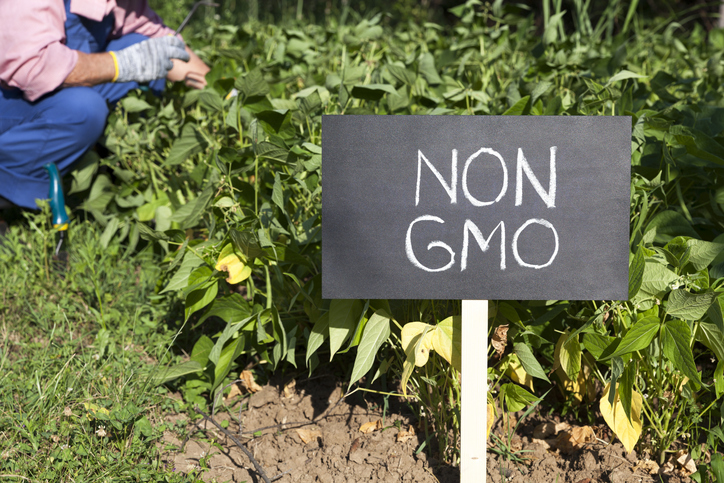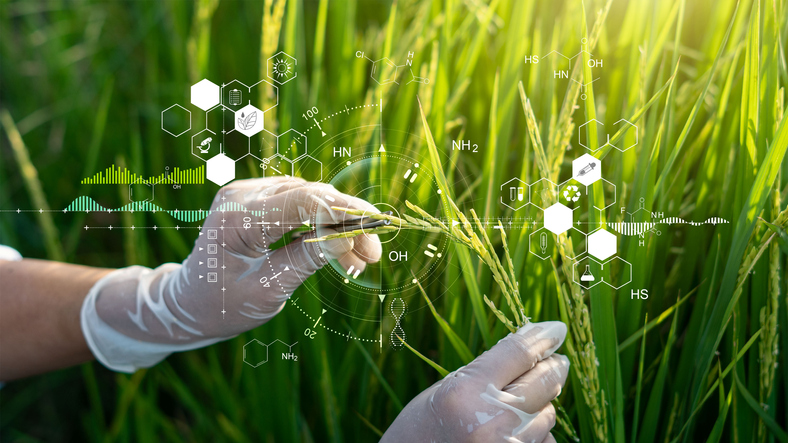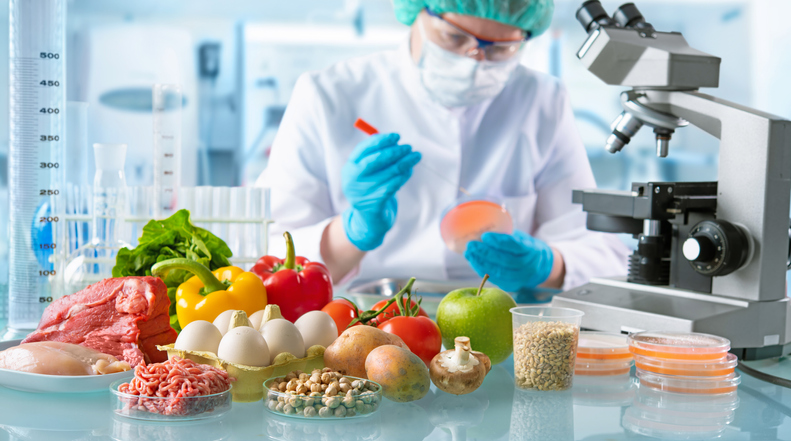October is traditionally a month of harvest. This month, crops are brought in from fields and gardens, and we give thanks for another season of bounty. October is also National Non-GMO Month – a perfect time to reflect on the nation’s food supply.
National Non-GMO Month is a celebration of transparency in the agriculture and the food system that supports our environmental well-being. It protects the genes of food-bearing plants for future generations. It’s a month to be thankful for the farmers, brands, and retailers that provide non-GMO and organic options for our store shelves.
What is GMO?

GMO stands for “genetically modified organism.” It’s a plant or animal that has undergone genetic engineering techniques to tweak some of its original characteristics. These products have inner workings that are genetically engineered and manipulated with the DNA of other plants, animals, bacteria, or viruses.
The key steps involved in genetic engineering include identifying a trait of interest, isolating that trait, inserting it into the organism, then propagating that organism. Usually, plants are genetically modified to make it resistant to drought or a particular herbicide. Some are modified to contain built-in pesticides. Some have edited genes to remove unwanted traits; for instance, there are GMO apples and potatoes that are resistant to browning when sliced.
GMOs have benefits for the farmer – it helps produce more yield with more desirable qualities, which means less waste. It’s also a solution to support the high demand for food. And to be honest, having produce and animals with undesirable traits removed can be pretty cool.
Why Should GMOs be avoided?

One should be wary about GMOs. Though studies have proven their safety for the past 20 years, we are still unsure about its long-term effects for the next decades.
There are many reasons that we should be wary about GMOs. Some of these reasons are:
- Negative Effect on Soil Health
- Questionable Efficacy
- Toxic for the body
There are more but let us take a deeper look at these.
1. It has a negative effect on soil health.
Most GMO plants produced in the US today allow resistance to a specific herbicide – Monsanto’s glyphosate weedkiller known as Roundup. These GMO seeds of corn, soy, and beets have been genetically modified to grow even when the herbicide is applied to them. While Monsanto’s Roundup is not tested as toxic to humans and other mammals, the longer it’s used, the worse its effects on soil health and long-term plant fruitfulness. Also, these GMOs may not allow the necessary nutrients to be absorbed by animals that consume them. It’s linked to the recent die-off of bees.
2. It has questionable efficacy.
The Union of Concerned Scientists has studied Monsanto’s drought-tolerant corn and issued a report that the GM product failed to conserve water and is only slightly more drought-tolerant than its traditionally-bred counterparts. This report questions the biotech firm’s dedication to developing crops that conserve water, as it becomes a growing concern in agriculture.
3. It may be toxic for the body.
When genetically modified foods were introduced in the US a few decades ago, people reported toxic effects caused by GMOs, creating an atmosphere of fear and avoidance towards GMOs. To back up these claims, the Institute of Responsible Technology reported that rats who were fed a diet of GMO potato had every organ in the body adversely affected after just ten days of feeding. They concluded that the process of making GMOs make food toxic.
However, human observational studies don’t replicate these effects, even over multiple generations. Studies that monitored GMOs’ toxicity on humans found no significant differences in the buildup of toxicity in the body. It may appear that GMOs as a class are no more harmful than traditionally grown food sources, but the technology is still young, and there are still a lot of things yet to be discovered. For those people who want to be safe, it’s recommended that they stick to organic, traditionally-grown food.
Where can you find GMOs?

In the US, nearly 80 percent of foods in supermarkets contain ingredients that come from genetically engineered crops. More than 80% of the country’s packaged and processed foods contain genetically modified ingredients, and about 90% of corn, cotton, and canola are genetically modified. If you think you don’t eat these things, GM corn becomes corn oil or high fructose corn syrup. GM cotton and canola show up in your food as canola oil and cottonseed oil. These vegetable oils and sweeteners are used across the food supply.
Processed foods often contain hidden GM ingredients unless the product is organic or labeled as non-GMO. Here are some ingredients that may be made from GM crops or GM micro-organisms:
- Baking powder
- Aspartame
- Caramel color
- Canola oil
- Citric acid
- Cobalamin
- Condensed milk
- Corn products (flour, meal, masa, oil, sugar, syrup, etc.)
- Glucose
- Gluten
- Glycerin
- High fructose corn syrup
- Hydrogenated starch
- Hydrolyzed vegetable protein
- Isoflavones
- Lecithin
- Lysine
- Malt products (malt, malt extract, malt syrup)
- Milk powder
- Modified starch
- Monosodium glutamate
- Oleic acid
- Phenylalanine
- Sorbitol
- Soy products (flour isolates, lecithin, milk, protein, oil, sauce, etc.)
- Starch
- Sugar (unless made from cane)
- Stearic acid
- Tamari
- Teriyaki marinade
- Tocopherols
- Tofu
- Triglyceride
- Vegetable fat
- Whey
- Whey powder
- Xanthan gum
FAQs: Consuming for a Cause: National Non-GMO Month

1. What is the purpose of GMOs?
GMOs are essentially modified organisms that are advantageous to producers and consumers. Among the organisms that are modified to form GMOs, plants are the most common. Such modified plants have the capabilities that allow them to be resistant to certain diseases and insects. When plants are genetically modified, they ensure that there is greater food production.
Greater food production is very much welcome in our world where many do not have enough food to live a healthy life but the cons of GMOs are extensive as well.
2. What are the effects that GMOs produce?
The main purpose of GMOs is to produce genetically modified organisms, These can include animals, plants, and other organisms. However, a big concern is that if these modified organisms are introduced into the environment they may affect biodiversity. This can be a pro and a con.
Since these species are genetically modified, there is a possibility that they would be more capable of surviving our ever-changing environment. Hence, they may overrun the existing species. In this way, biodiversity is at risk of disappearing.
When GMOs are being licensed, factors like these are taken into consideration because they have the power to essentially destroy the world that we live in anymore. Diversity and different species of plants and animals as we know could very well disappear and be replaced by these modified organisms.
3. Why do people avoid GMOs?
GMOs are essentially genetically modified organisms and although they sound very futuristic, they have their pros and cons.
A pro of GMOs can be that the number of nutrients and other factors can be controlled. Additionally, farmers would not need to use as many chemicals such as pesticides when growing these modified organisms. This is due to the fact that when modifying, they can be wired to be resistant to fungus and other bacterial growth. Additionally, their nutrient content can also be tinkered with.
Furthermore, GMOs are also considerably cheaper than the non-GMO variety.
However, there is a good reason as to why people avoid GMOs. Because their DNA is altered, they are essentially different from the Non-GMO kind. Hence, our body does not necessarily recognize them. Thus, many people get allergic reactions after consuming certain GMOs. This allergic reaction may be harmless but it could also be fatal in several cases.
Additionally, they may also cause an increase in antibiotic resistance which would be extremely hard to deal with.
4. What foods to avoid on a GMO-free diet?
Due to the disadvantages of GMOs, many people switch to non-GMO diets. This is mostly due to the allergic reactions that GMO products trigger in people. To avoid that, many people are looking for alternatives.
If you want to switch to a non-GMO diet, avoid these items from the grocery store and maybe try to get these from farmers.
- Meat
- Milk
- Canola Oil
- Canned Soup
- Corn
- Yellow Squash
- Soy
- Papayas
- Zucchinis.
GM-free food authority: Non-GMO Project
There are two voluntary labels to look for when avoiding GMO: certified organic and Non-GMO Project Verified. The Non-GMO Project is an independent third party verifier of GM-free foods in the United States. You have seen its butterfly logo on a green check, designating that the product is verified as non-GM. The organization ensures non-GMO claims, backing them up by best practices and testing throughout the supply chain.
Products that carry the Non-GMO Project Verified seal are meticulously verified and tested to provide customers with clearly labeled non-GMO choices.
Conclusion:
GMOs are essentially modified organisms whose DNA is tweaked so that they can be more useful to us humans. However, with the pros of these scientific advancements comes their cons. This article has listed all the pros, cons, and other information that you need to make your own judgment about GMOs. Some people are okay with them and some avoid them like a plague. Which side are you on?

